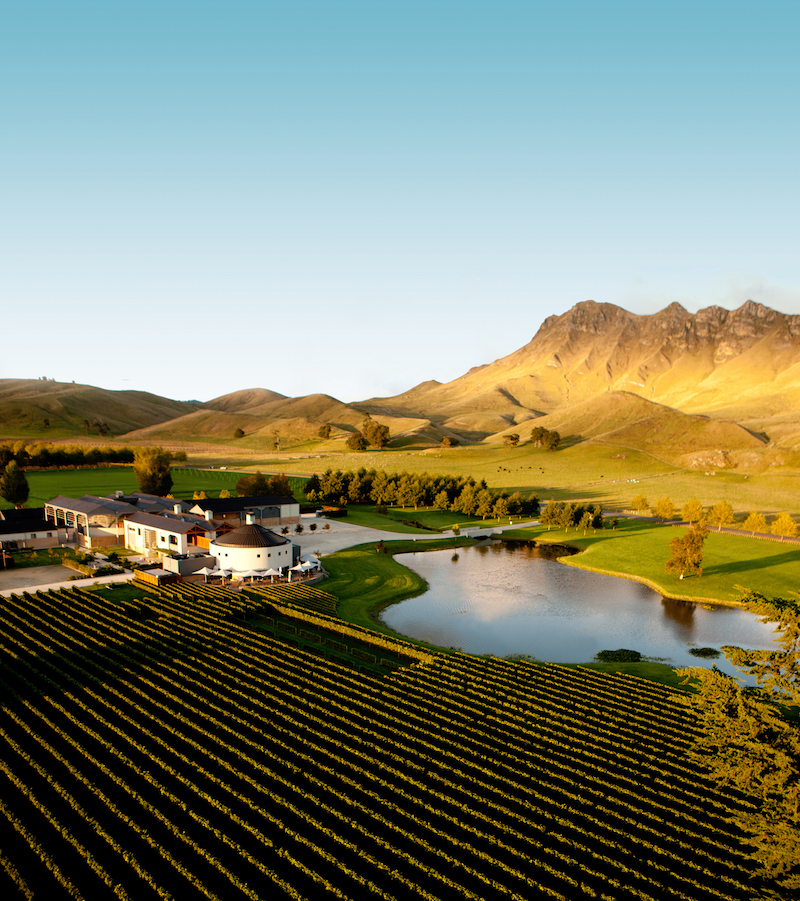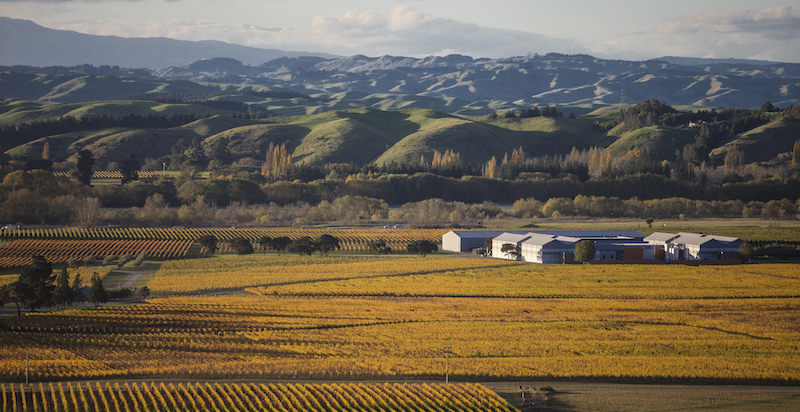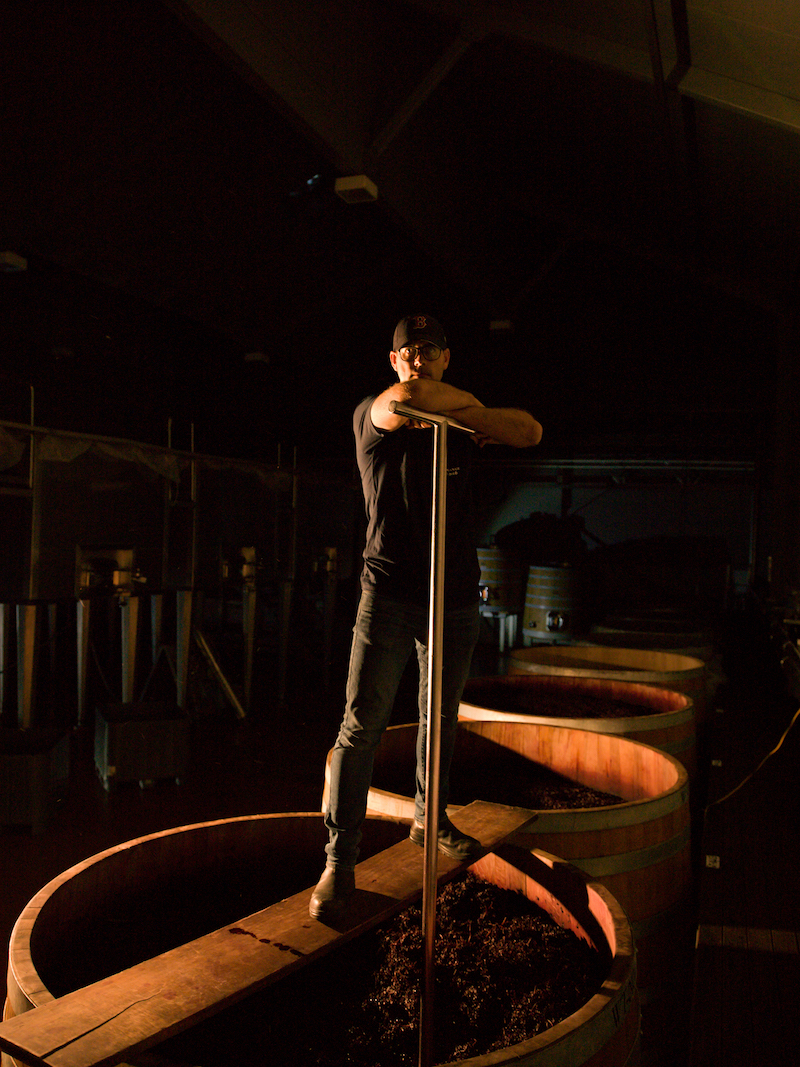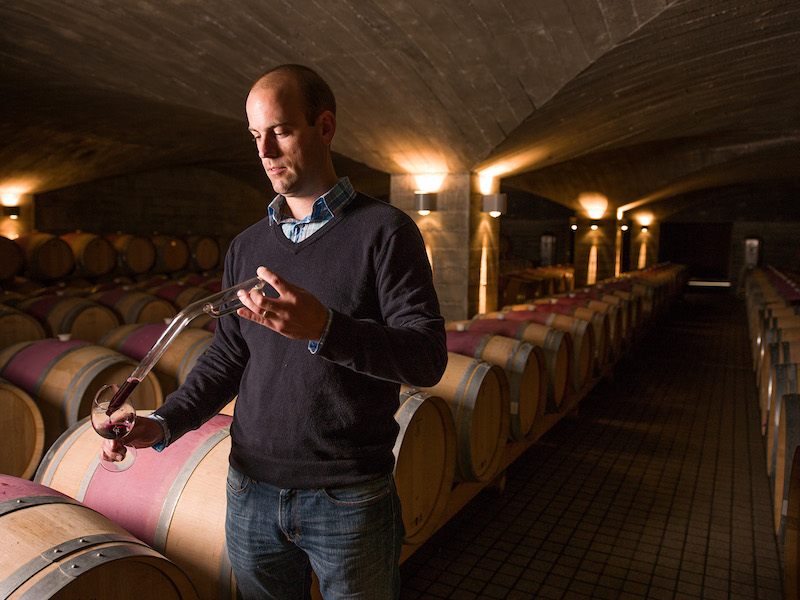In 2001 Craggy Range made its first estate grown wines, since then it has carved out an enviable reputation as the first New Zealand specialist producer of Single Vineyard Wines. This month Restaurant and Café spoke to Matt Stafford, chief winemaker for Craggy Range, located in the North Island’s wine district of Hawke’s Bay about his career and the incredible journey from grape to glass of the winery’s portfolio.
The search for a winery began soon after founder Terry Peabody returned from a business trip overseas and discussed it over dinner with his wife, Mary and his daughter Mary-Jeanne. Peabody made a promise to his family that the winery would be a family business and an enduring heritage legacy. He searched far and wide for the perfect spot and in visiting New Zealand for other business found that in the sweet latitudes for winegrowing and the youngest country in the world would be the perfect start for his new venture.
“When I pictured a life among the vines, I didn’t immediately think of New Zealand, but New Zealand was fantastic because we were interested in clean air, green fields and a culture of care for the land,” said Mary Peabody.
New Zealand had potential that Terry had not found elsewhere and the country’s exceptional climate and the pioneering spirit of the people indeed aligned with his philosophy and desire to cut a different path. Terry set out to create new benchmarks with wines that would become internationally known as the New World classics.
While in his final year of studying soil science at Lincoln University, Stafford watched the formation of Craggy Range with admiration and corresponded with director Steve Smith MW about the exciting soils that had been planted. “After then studying Viticulture and Oenology after graduating from Lincoln, and working a few vintages abroad, I joined the Craggy Range Winemaking team at the start of 2006,” said Stafford.
“I decided to become a winemaker as I found wine to be the best way to express and share a unique story that encapsulates so many things about where the vine has been planted, this tied in perfectly with my love of the land.”
Stafford’s desires to craft beautiful wines that spoke of their sense of place fitted seamlessly into the company’s ambition of being an equal in the fine wine world and to create an enduring family legacy. In starting out at Craggy Range as an associate winemaker, Stafford worked closely with grapes sourced from the Gimblett Gravels Vineyard and spent time understanding the terroir of the grand estate that is now defined appellation likened to that of the Bordeaux region in France. In 2010, Stafford assumed the role of the winemaker with a broader responsibility for the wines produced from the Martinborough and Marlborough estates. Two years later, he was promoted to the chief winemaker that saw him take responsibility for the winemaking team as well as the entire Craggy Range wine portfolio. “I am very fortunate to lead an extraordinary group of people who want to be part of creating something truly magnificent that successive generations can admire and enjoy for years to come,” said Stafford.
“We are blessed with two fantastic estate vineyards that were bare land before planting so the focus on quality from the very beginning has been practised,” said Matt Stafford, chief winemaker for Craggy Range.
“Our Gimblett Gravels Vineyard in Hawke’s Bay is a new river bed of the Ngaruroro River and the warm location and stony soils are excellent for medium bodied red wines made from Syrah, Merlot, Cabernet Sauvignon and Cabernet Franc and also for elegant Chardonnay.
“The Te Muna Road Vineyard in Martinborough has two distinctly different soil types that were both formed by the adjacent Huangaruru River. “On the older upper terrace, we have Pinot Noir, Riesling, Pinot Gris, Pinot Blanc and Gewurztraminer planted within old (30-40,000) complex river stones that have previously been eroded by volcanic ash and now interact with clay to produce pure yet complex savoury wines. On the lower terrace in younger river gravels, we have Sauvignon Blanc planted. We also have the Kidnappers Vineyard planted to Chardonnay situated on the coast near Te Awanga in Hawke’s Bay and a small Sauvignon Blanc Vineyard (Avery Vineyard) in the famous Rapaura area of Marlborough.”
Unique qualities of the chosen varieties are evident in the pure expressions of the wine within the vineyards and are often described as elegant, subtle and textural.
“Our ambition at Craggy Range is to have the wines enjoyed in many of the finest restaurants and hotels around the world.”
To keep an open perspective towards wine within the Craggy Range cellar, the company and Stafford support many NZ Winegrowers Events around the world as well as large exhibitions such as VinExpo and Prowein. “As a winemaker, I enjoy the interaction with other winemakers and consumers to keep abreast of what people’s taste preferences.”
In 2014, Craggy Range was voted as Wine Enthusiast magazine’s ‘New World Winery of the Year’. This award is among several significant accolades for individual wines also. “For me, this award stands out from the others, to have our whole approach towards Winemaking acknowledged was very satisfying.”
When it comes to sustainability and technology, Craggy Range is always looking to develop and implement programmes that will enhance both the vines and also ensure the future of the winery and its team.
Technology may be an integral part of highly tuned and precise farming systems in place. However, it isn’t in charge. Pruning, removal of excess shoots and foliage, thinning and arranging developing shoots into supporting wires are all done by hand.
Since implementing a formal sustainability policy in 2001, the results have seen a measurable significance.
The vineyards are certified and audited under the highest level of New Zealand Sustainable Winegrowing; this has significantly reduced many synthetic inputs over the last five years and also reduced both waste and water usage. Its philosophy operates on a ‘minimal additions’ policy that favours the use of naturally occurring yeast and bacteria before synthetics and discourages the use of many allowable additives as the winery wishes for the wines to be real and natural.
Currently, the winery operates a world-leading technology winery waste treatment system using biological systems to treat winery wastewater and return it directly to the land as irrigation water. An energy saving heat recovery system in the winery reduces electricity consumption by up to 30 percent.
“We follow best practice within sustainable winegrowing and have some small projects throughout vineyards and wineries that we see cultural and economic benefits from, like our nil-residue spray program and winery heat recovery system,” said Stafford.
Over the years, Craggy Range wines have developed a certain reserve, depth and maturity and now grace the tables of not only many homes but restaurants internationally as well. Three ranges are part of the portfolio including The Prestige Collection, a collection of wines that express a combination of exceptional ripeness terroir and the most complete expression of the winemaker’s art, The Family Collection, a range of single vineyard wines representing the natural exuberance of each variety in the chosen terroir and The Limited Editions Collection, wines selected for this collection show unique and different characters to the rest of the wines in the Craggy Range portfolio and are limited in volume.
The latest offering from the vineyard is its Prestige Collection from the 2014 vintage. “We are about to release the wines within the ‘Aroha’ (Pinot Noir), ‘Le Sol’ (Syrah) and ‘Sophia’ (Bordeaux varietal blend) that represent our best expression of our vineyards within this excellent growing season,” said Stafford.
“Wine making is a never-ending world of discovery and my approach is to be sensitive to the vineyard and how it has fared in the growing season in a way that subtle differences can be enjoyed from year to year.”
For Craggy Range, 2013 was a fantastic growing season that was a relief to the team after a difficult 2012 season with a cool summer and an extended harvest, as noted by others in the Hawke’s Bay region also.
“Climate change cannot be ignored but for now, it is hard to evaluate the implications as we have so many seasonal variables as our vines mature.”
After visiting Domaine des Comtes Lafon in Burgundy, Dominique Lafon shared one piece of advice when it came to winemaking to Stafford, that had been passed down from his father René Lafon that was, “To have the courage to do nothing”, advice that has stuck with Stafford to this day.
Going forward, Stafford looks to continue to build strong relationships with loyal supporters of the wines around the world using a recent run of excellent vintages to cement their space within the world of fine wine.
“I look forward to continuing to enjoy making wines that are reflective, representative and cherished and proud to say that the role I have today has been my biggest achievement in having the ability to craft a range of wines from such excellent vineyards.”









